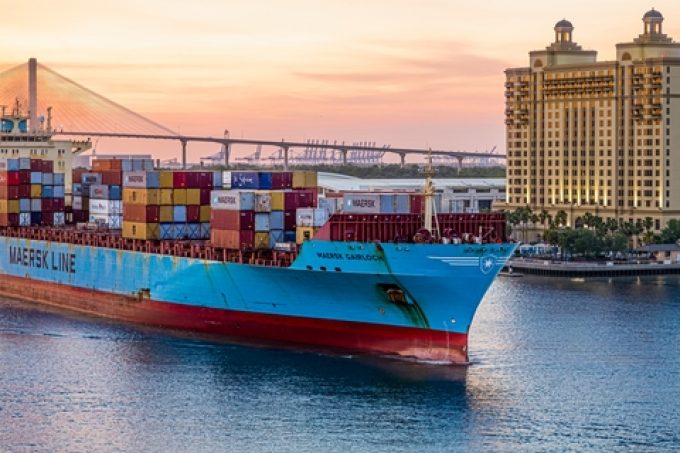Threat of rising oil price adds to frustration for crisis-hit supply chain chiefs
New warnings from the World Bank of surging oil prices, adding to the continuing instability ...

Maersk’s new regional president for North America, Charles van der Steene, has advised US shippers to “know your best alternative” in the American market.
Writing ahead of the S&P Global TPM24 conference in Long Beach California next week, he said: “I don’t have to tell you we’re operating in a world peppered with supply chain disruptions – Red Sea, Panama Canal, east coast ILA labour negotiations.
“I’ve heard these concerns from many of our customers,” he said in Maersk’s February North America market update.
He warned that shippers should “be prepared for the Red Sea situation to last into the second half of the year”, and that longer transit times should be built-in to customers’ supply chain planning.
Maersk said that, by the end of this week, it will have reinstated its full network on the transpacific tradelanes, following the Chinese New Year factory shutdowns this month,
However it said it had faced “heavy congestion” in the west coast port of Oakland, with delays to working ships and the consequential knock-on delays to backhaul voyages to Asia.
Indeed, maritime and supply chain intelligence firm eeSea’s weekly transpacific update reported Oakland as “still struggling with high congestion”, whereas the neighbouring California ports of Los Angeles and Long Beach “continue to enjoy smooth sailing”.
Meanwhile, on the US east coast, Maersk said its TP17 Asia-US east coast pendulum loop and TP88 Asia-US Gulf Panama service were “facing delays”.
In respect of the TP88, Maersk said that, “given the upcoming gaps”, it was working to deploy an extra loader to ensure its reliability.
“We are making changes to preserve weekly departures for our services, with the goal of offering more predictability, reliability and consistency, despite the associated delays that come with the current Red Sea re-routings,” it explained.
Late arrivals and the bunching of ships caused by the Red Sea diversions and Panama Canal restrictions has resulted in congestion at US east and Gulf coast ports, with eeSea alerting subscribers to an escalation in congestion at the port of Savannah this week coinciding with the arrival of 31 vessels.
Maersk also said that, as a result of ships no longer transiting the Suez Canal, its MECL Mediterranean to US east coast TA5 and TA6 services had been impacted by a backlog of exports at its western Med hub port of Algeciras. To address this, it would deploy the 6,690 teu Maersk Karachi as an extra loader, in order to clear some 6,000 teu of “standing cargo”.
And for North Europe to the US east coast, Maersk reported restrictions on its TA2 service, “where capacity is limited due to downsized vessels”. To mitigate this, it was “blending loads” across its TA1 and TA3 loops “to prevent any cargo rolling”.
Maersk said it had added “about 6% more vessel capacity to offset delays due to the longer transit around the Cape of Good Hope”, so far, and was “increasing its focus on empty container repositioning and adding more equipment to the current pool”.
CMA CGM, meanwhile, said it would resume some transits via the Red Sea, on a “case-by-case” basis.
It said: “The situation is being closely assessed for each vessel before each transit, routing choices therefore cannot be anticipated or communicated. Otherwise, all other vessels are rerouted via the Cape of Good Hope.”
That announcement is likely to leave customers with numerous queries, such as when, or whether, surcharges will be added, as well as on schedules and the timing of services.
Comment on this article